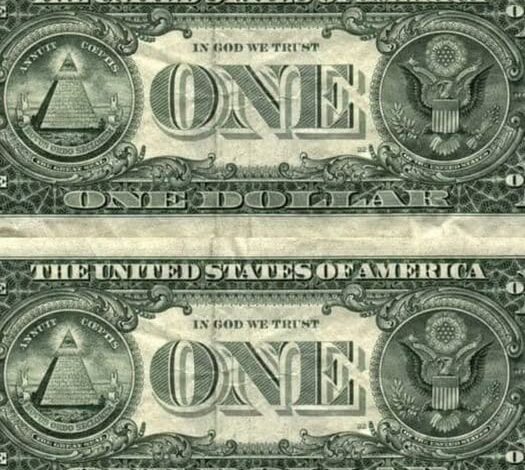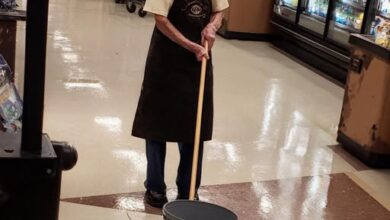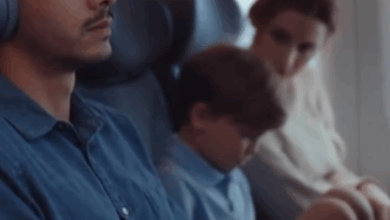
The $1 Bill To Keep An Eye Out For!!
Most people don’t give a second thought to a $1 bill. It’s the most forgettable thing in your wallet — crumpled, worn, worth barely anything in a world where even gum costs more. But thousands of Americans are suddenly discovering that some of those plain little bills are worth far more than they look. Some are worth hundreds. A few have gone for thousands. And all because of one detail most people never bother to look at: the serial number.
A small community of collectors has exploded in recent years, hunting down rare or unusual serial numbers printed on U.S. currency. These collectors aren’t looking for antique bills or mint-condition collectibles from a museum. They want bills that are still in circulation today — bills you could withdraw from an ATM, get as change at a gas station, or pull from your coat pocket after forgetting about them for weeks.
And the demand is only growing.
One site, CoolSerialNumbers.com, has been buying these “fancy” bills for prices that make your head spin. A $1 bill that cost someone a dollar can suddenly sell for $500, $1,000, sometimes more. The site’s “Want List” lays it all out — and if one of the bills in your wallet matches the patterns they’re hunting, you might be sitting on a small goldmine without realizing it.
Collectors want patterns, rarity, and mathematical coincidence. They’re looking for serial numbers that shouldn’t exist by simple chance. And there are a few categories that get them especially excited.
One of the biggest jackpots is seven repeating digits. A bill with a number like 09999999, 18888888, or 59999999 is incredibly rare. When a bill rolls off the printing press with almost every digit identical, collectors go crazy. They don’t just want it — they compete for it. People have sold these for four figures without blinking.
Another type is called “seven of a kind,” which is exactly what it sounds like. A bill like 00090000 or 90000000 has seven digits identical and one outlier — rare, striking, valuable.
Then there are “super radars,” which are palindromes with a twist. A normal radar note reads the same forwards and backwards, like 12344321. But a super radar has matching outer digits and all the inner digits identical: 01111110, 10000001, 80000008. They’re like little numeric puzzles printed onto legal tender. Collectors will pay big money for them.
“Super repeaters” are another fan favorite. These are serial numbers that create a flawless repeating pattern, like 67676767 or 12121212. They look so crisp and intentional that once you know about them, you can’t believe you’ve never noticed them before.
And of course, there are “double quads,” bills with two blocks of four identical digits — 11110000, 44440000, 88880000, and other combinations that feel more like code than currency.
CoolSerialNumbers.com lists all of these patterns publicly. Anyone can look up what they want. Anyone can compare the bills in their pocket. And that’s the thing: these collectors aren’t looking for museum-kept notes in glass cases. They’re looking for strays — circulation bills that randomly ended up in the hands of ordinary people.
Which means the next person to strike gold could be the guy ahead of you at the grocery store. Or the waitress who hands you your change. Or you, right now, with a wallet you haven’t bothered checking.
The reason these bills have value comes down to scarcity. The U.S. prints billions of bills a year, but only a microscopic fraction come out with rare, collectible sequences. The odds that one lands in your hands are tiny — but it happens every day. And collectors with deep pockets know exactly how rare they are. They’re willing to pay serious money for the ones they want.
Some people have found them in tip jars. Some pulled one from an ATM withdrawal. One man reportedly found a repeater note in a vending machine. Another claimed he spotted a radar in a stack of bills he was about to deposit at the bank.
The stories keep spreading, and the search keeps growing.
For experts in currency collecting, serial numbers have always been a niche fascination. But in the last few years, social media has blown the doors wide open. Videos of people finding rare bills at random have gone viral. Young collectors are entering the hobby at rates never seen before. Suddenly, everyone wants to know if that wrinkled $1 in their back pocket might be a hidden treasure.
And here’s the thing — even if your bill isn’t on one of the “fancy” lists, it might still hold some value. Low serial numbers (like 00000025), high serial numbers (like 99999990), solid numbers, ladders, inverse ladders — the list of collectible patterns is long and keeps expanding. Some collectors chase specific Federal Reserve districts or blocks. Some want star notes — bills printed as replacements. The world of currency collecting is far bigger than most people ever realize.
But the easiest place to start is simple: just check your cash. Turn the bills over. Look at the green stamp. Look at the eight-digit number. If you see a pattern that jumps out — repeating digits, mirrored digits, perfect rhythm — don’t spend it. Look it up. Compare it to the want lists. You might have something special.
It’s strange to think something as boring and everyday as a $1 bill could be worth so much. We get used to seeing them as disposable, forgettable, the small change of life. But every so often, one bill slips through the cracks of probability and becomes a collector’s prize.
You could walk past it a dozen times. You could spend it without noticing. Or you could catch it before it slips away and realize you’re holding something far more valuable than a single dollar.
Either way, it never hurts to look.
Check your wallet. Check your pockets. Check the junk drawer, the coffee can full of loose change, the old winter jacket you haven’t worn in years.
Today might be the day you find a $1 bill worth a thousand.




